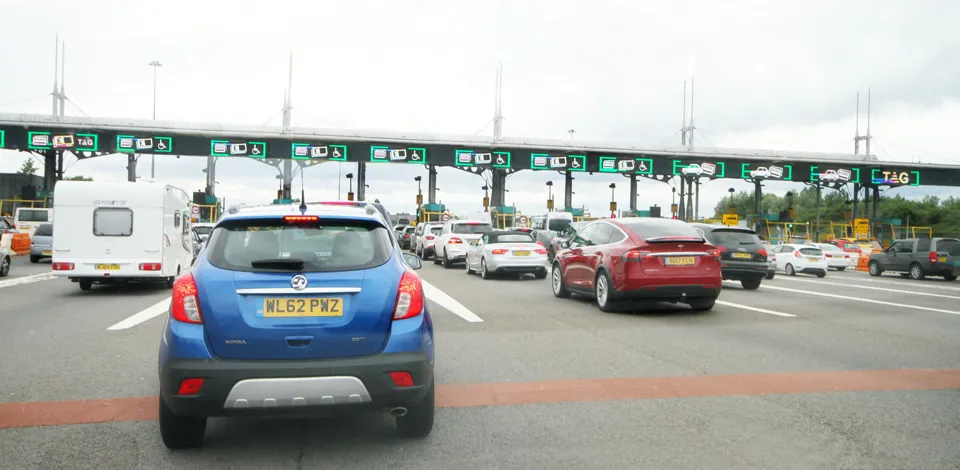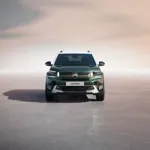Fleets continue to remain in the dark as to the finer details of the new free flow Dartford Crossing scheme due to launch this month, prompting warnings that it could be an administrative nightmare.
The new regime, which sees the introduction of a remote charging system and the removal of the present barrier payment system and booths, is known as DART Charge.
The scheme has already got off to one false start after the Highways Agency delayed its October owning to later this month.
However, the Agency was unable to provide Fleet News with an exact start date for the new system, which is when a new price structure for vehicles using the River Thames crossing will also be introduced.
What’s more a pre-pay account scheme giving fleets a saving of up to a third on every crossing is being introduced, but details of it have yet to be announced.
The Agency said that pre-pay account registration would be open “well in advance” of DART Charge being launched, but set up details have yet to be published.
Further more, the Agency promised that fleets that currently use the existing DART-Tag account scheme would be contacted with further information on how to transfer to the new DART Charge.
The spokesman said: “We will do this very shortly, and certainly in advance of DART Charge going live.”
He added: “We will do all we can to help all fleets prepare for the changes, and can reassure drivers that we’ll give them plenty of notice before the changes are introduced.”
He also urged fleet decision-makers to sign-up for updates on the new system.
However, ACFO is unhappy at the lack of advance information. John Pryor, chairman of the fleet decision-makers organisation, said: “Even at the end of October businesses had no idea of the start-date for the new system. They have been left in the dark and therefore have been unable to set up the appropriate in-house systems.
“DART Charge is not only a concern for fleets operating close to the Dartford Crossing. We have had fleets based in Scotland asking questions about how the system will work because they have not been able to gather information from the Highways Agency.”
Simon Watts, fleet manager at East Sussex headquarter Rydon, said: “We are very frustrated with the lack of information from the Highways Agency.
“We need to digest what they are proposing and then get systems in place within our own business and communication information to drivers. We are getting to the eleventh hour and we are none the wiser.”
The construction, development, maintenance and management group, which has an office in Dartford, operates a fleet of 350 vehicles - two-thirds company cars with the remainder light commercial vehicles - and has approximately 100 cash allowance drivers. It also has around 50 vehicles registered on the current DART-Tag scheme at any one time.
Watts said: “The Highways Agency must know how the entire account system will work so why can’t they share that information with us? Our drivers are asking us questions about the changes and we are unable to provide answers.”
A frustrated Watts has even called in person at the Dartford Crossing office in a bid to find out information, but said staff were also in the dark.
Pryor said: “The new payment system has been badly thought through. It will be an administration nightmare for fleets.”
The new Dart Charge scheme is being introduced to reduce traffic congestion on both sides of the Crossing. Instead of paying at the barriers, there will be four ways to pay: online, over the telephone, via a payzone retail outlet or by post.
Companies can set up a pre-pay account for a minimum of one vehicle and a maximum of 999 vehicles - multiple accounts can be established if required.
Accounts can be topped up manually or via auto top-ups. Each vehicle must be registered on the account and automatic number plate recognition cameras, lasers and tag readers at the Crossing will be used to deduct the appropriate fee.
It is expected that the time from detecting a vehicle on the Crossing to it appearing on an online statement will be under an hour, though that may be longer if the weather is causing poor visibility or if the number plate is damaged, unclear or missing.
To prevent any of the aforementioned scenarios, the British Vehicle Rental and Leasing Association has advised its members to fit tags which are read electronically rather than visually. Existing DART-Tag account holders can choose to keep tags, but they must be allocated to a single vehicle.
If a pre-pay account is not set up, payment details can still be registered online with the appropriate fee automatically taken when using the Crossing. Details of the scheme have yet to be published.
Pryor said: “There will be a significant number of fines levied on fleet vehicles as companies get to grips with how the system works. This is partly because the Highways Agency has provided little in the way of advance information.”
ACFO is advising fleets to: ensure accounts were topped up to avoid non-payment penalties being slapped on vehicles; keep vehicle account information up to date to ensure new vehicles were added and defleeted vehicles removed; and establish a mechanism for ensuring employers did not pay charges related to private journeys such as daily commutes, holidays and shopping expeditions.
“Unlike the London Congestion Charge, the Severn Crossing or the M6 Toll there is no obvious alternative to the Dartford Crossing for drivers,” said Pryor.
“I don’t think that most businesses will want to foot the cost of private journeys so employers have to establish an employee reimbursement system”
At the same time as the introduction of the new system, the Highways Agency will start work to remove the booths and change the road layout on approach to the crossing. It is expected that work will be complete next spring.


















Ricki Sayer - 04/11/2014 11:58
There's no mention here of the misery being caused on a daily basis. I work five minutes from the toll but the time taken to get to the crossing has quite dramatically worsened in the last two months. It is not uncommon for it to take an hour from Dartford to the crossing barrier; at least twice in the last two months it has taken 3 hours just to get to a payment booth. After crossing daily for the last 14 years it has never been worse so consistently. I also don't understand why local workers have not been accommodated in the same way as the local residents. We bring business and employment to the area yet are not appreciated in any way. Most days I despair